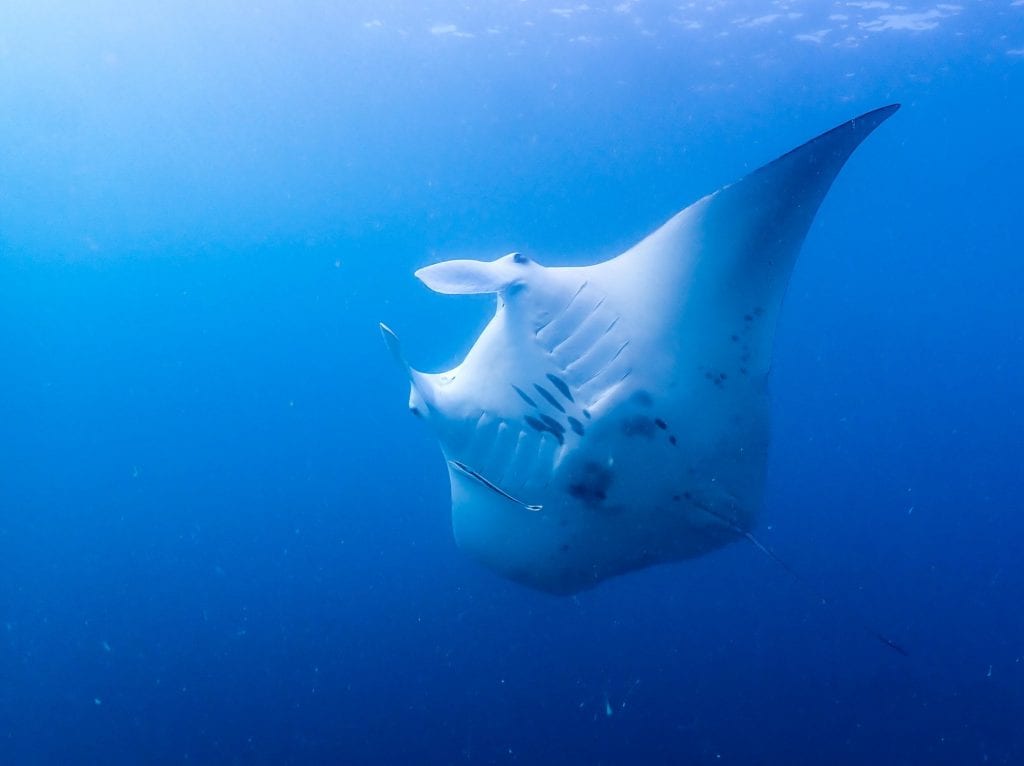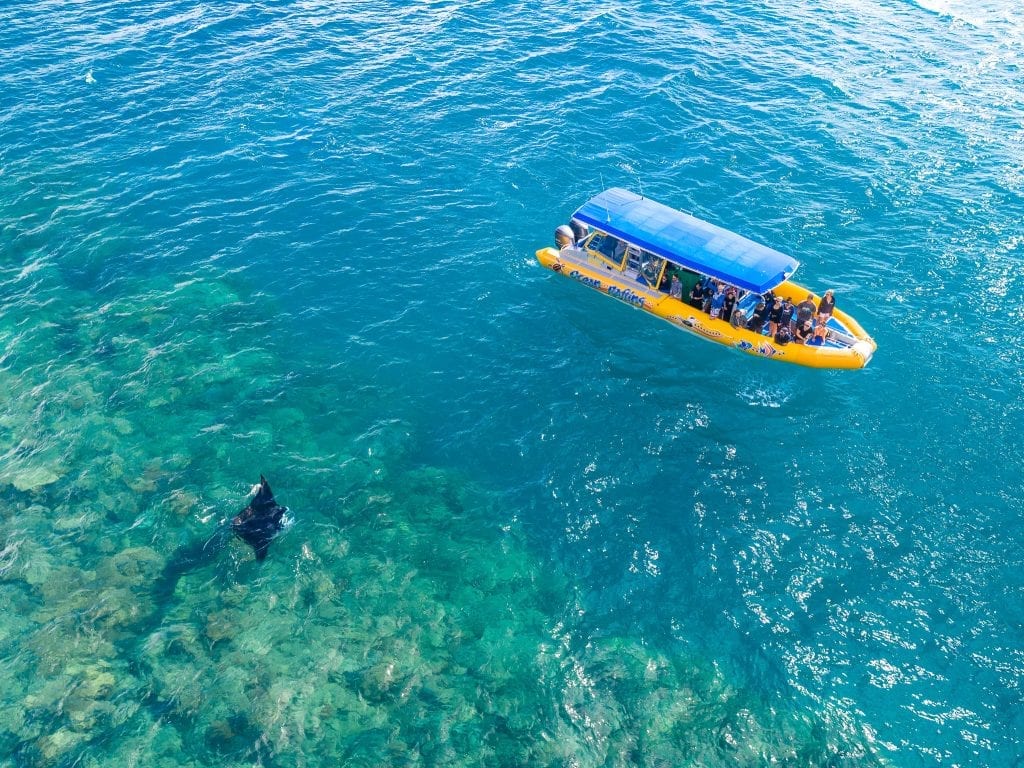The Great 8
The Great 8 are the Great Barrier Reef’s living icons. The creatures we all want to see! Ranging from reptile to mammals. From little to large. The Great 8 wish list reflects the outstanding diversity of the Reef. Have you always wanted to swim with Manta Rays, or see the magnificent Humpback Whales in their natural environment? Below is everything you need to know about one of the Great 8 and how to increase your chances of seeing them!
Manta Rays
Did you know, Rays are actually very closely related to sharks? The key difference is their body shape, with flat bodies and long slender tails it is easy to see why that could be confusing! The Manta Ray is the largest of all rays, growing up to seven metres across and over three tones these gentle giants are one of our favourites to see in the Marine Park.

Manta rays are filter feeders. They swim with their mouths wide open using the fins (Cephalic Lobes) on their face to ‘scoop’ the water into its mouth filtering out the krill and zooplankton. This filtering techniques often result in acrobatic displays, or chain feeding with other mantas to trap their food in the generated current.
Fun Fact!
Mantas give birth roughly every 2 years, this slow reproduction rate is one of the reasons they are considered to be Vulnerable on the IUCN Red List of Threatened Species. However, these newborns can survive without parental care and pop out rolled up like a little burrito!
Manta Rays in the Whitsundays
Here in the Whitsundays we generally see the slightly smaller reef manta ray (Manta alfredi), although more modest than the Oceanics they can still grow up to about 5m! These seasonal visitors come to see us between April and July, although they can be sighted all year round. Why? We’re not too sure! With very little known about these amazing creatures here at Ocean Rafting, we do what we can to help monitor populations through the Eye on the Reef Sightings Network and Project Manta.

So, if you would like to get close and personal with the majestic manta come join us on either a Northern Exposure or Southern Lights tour between May and July to increase your chances of this epic encounter. Our friendly and knowledgeable crew know all the hot spots and will do their best to make your dreams a reality.

